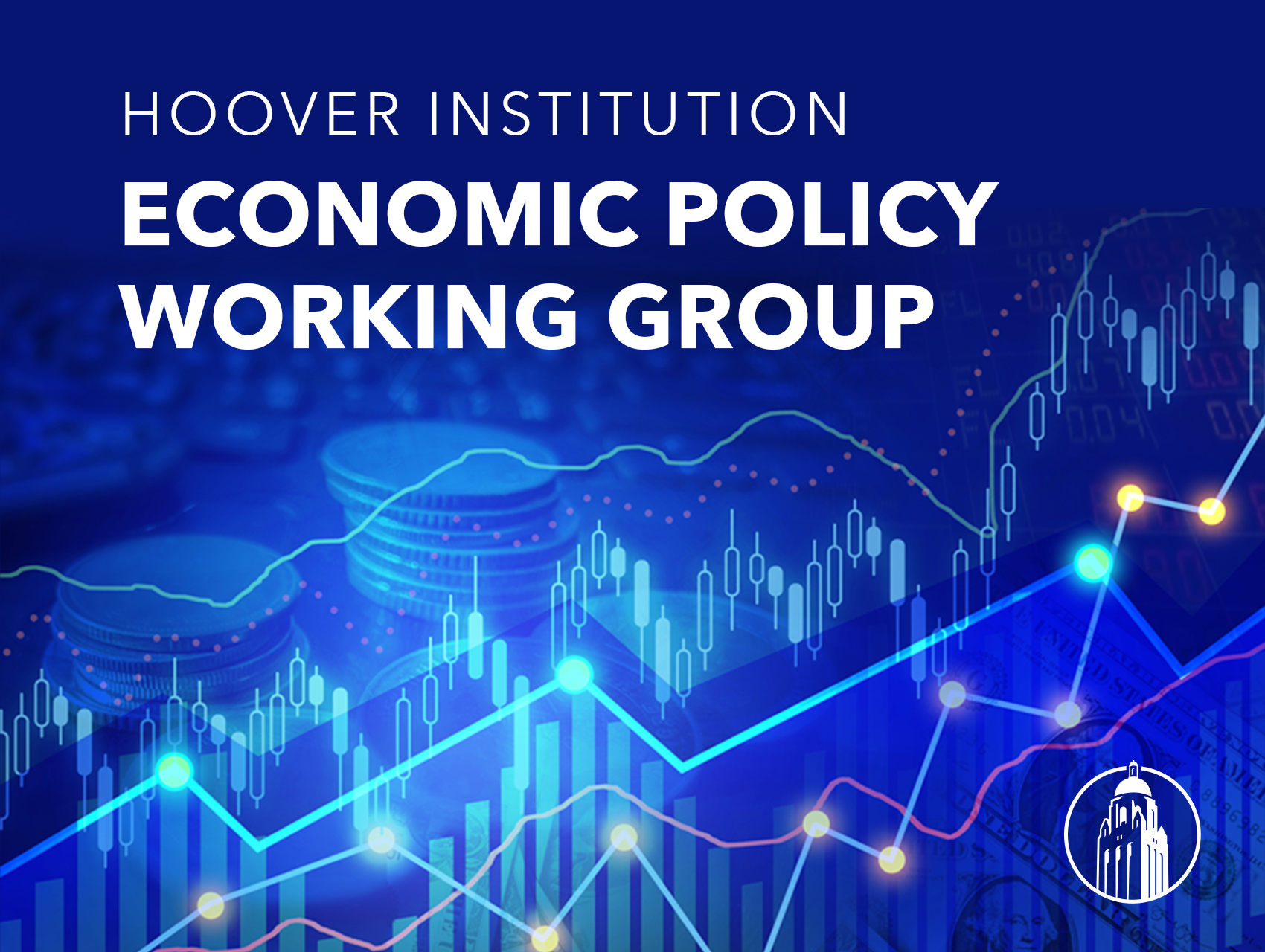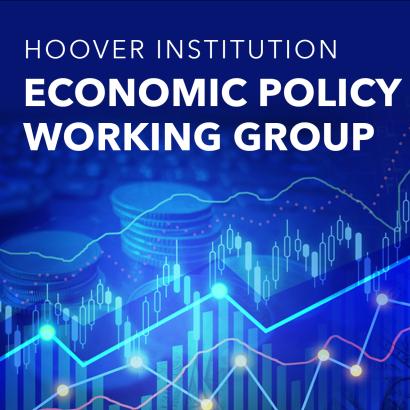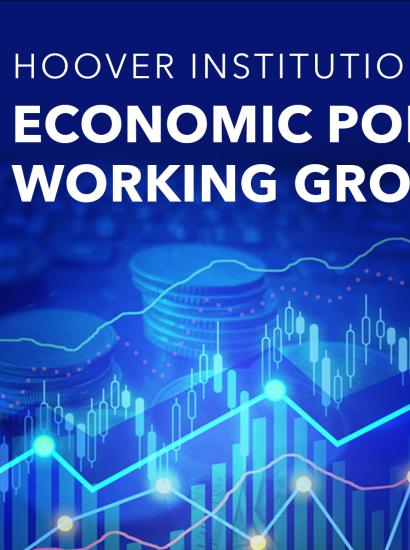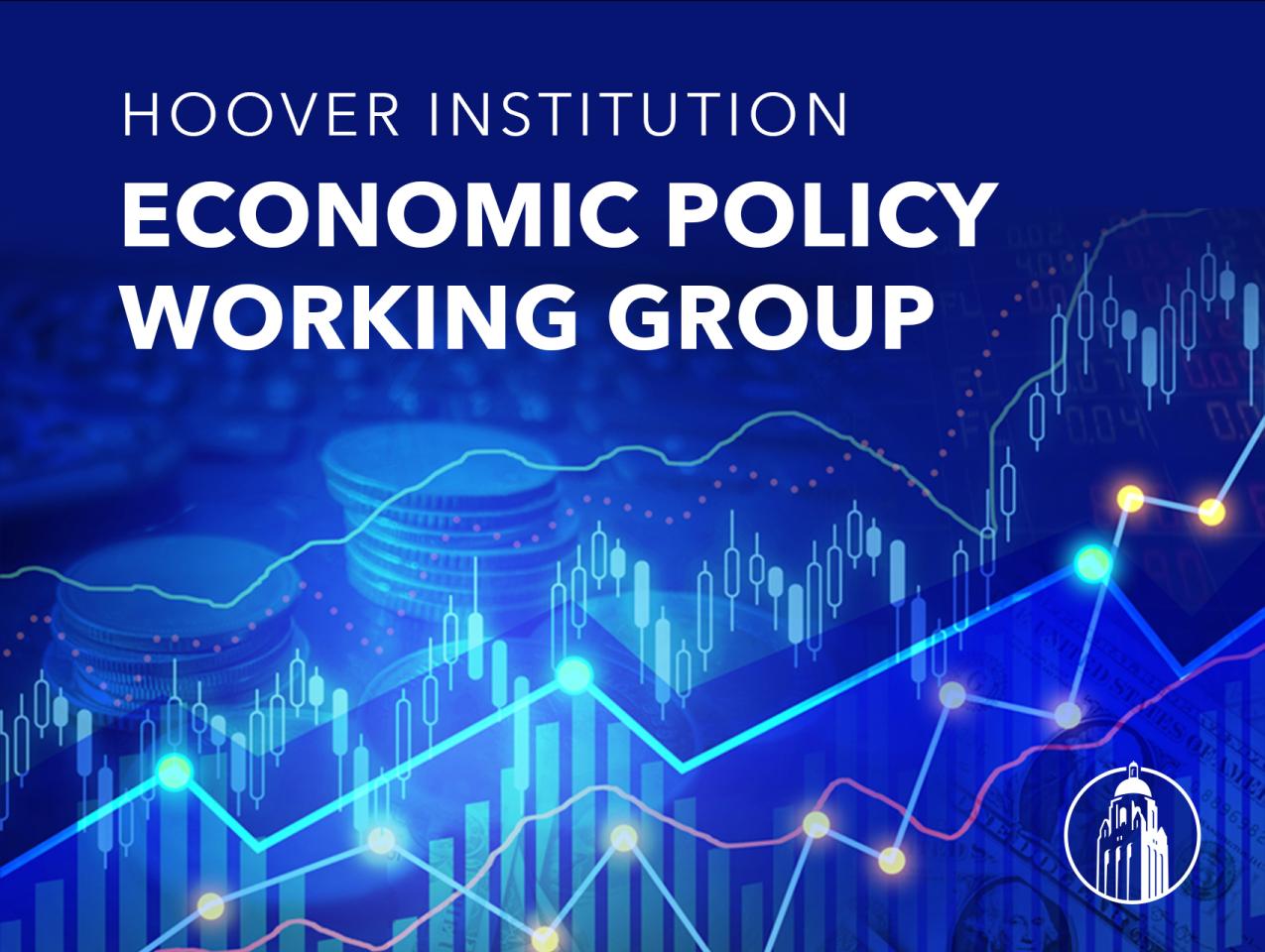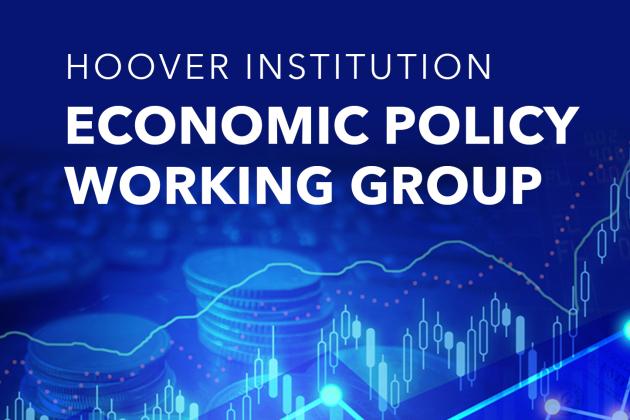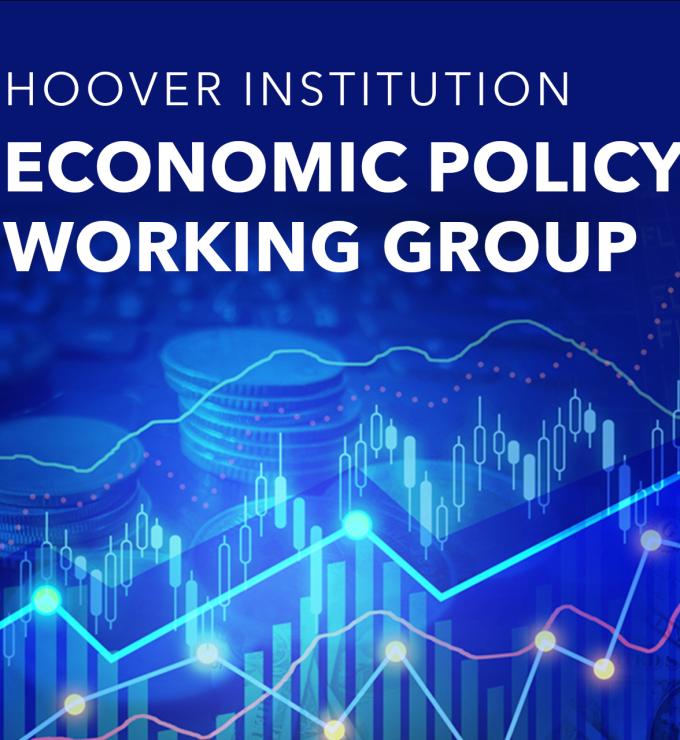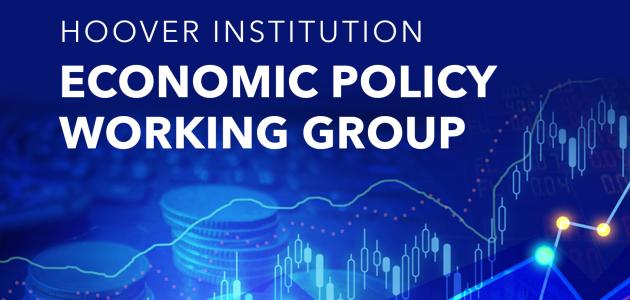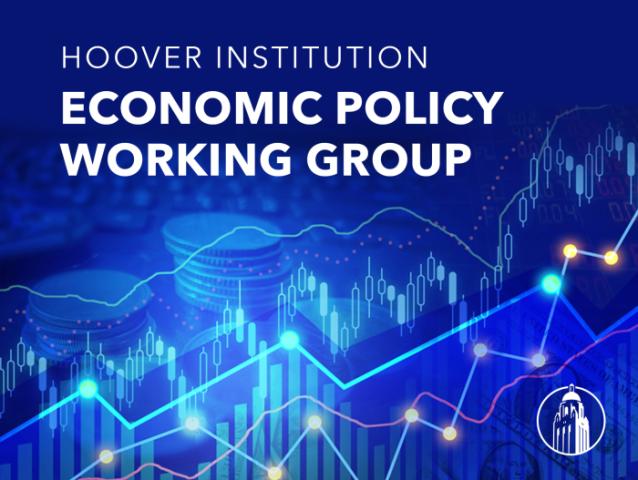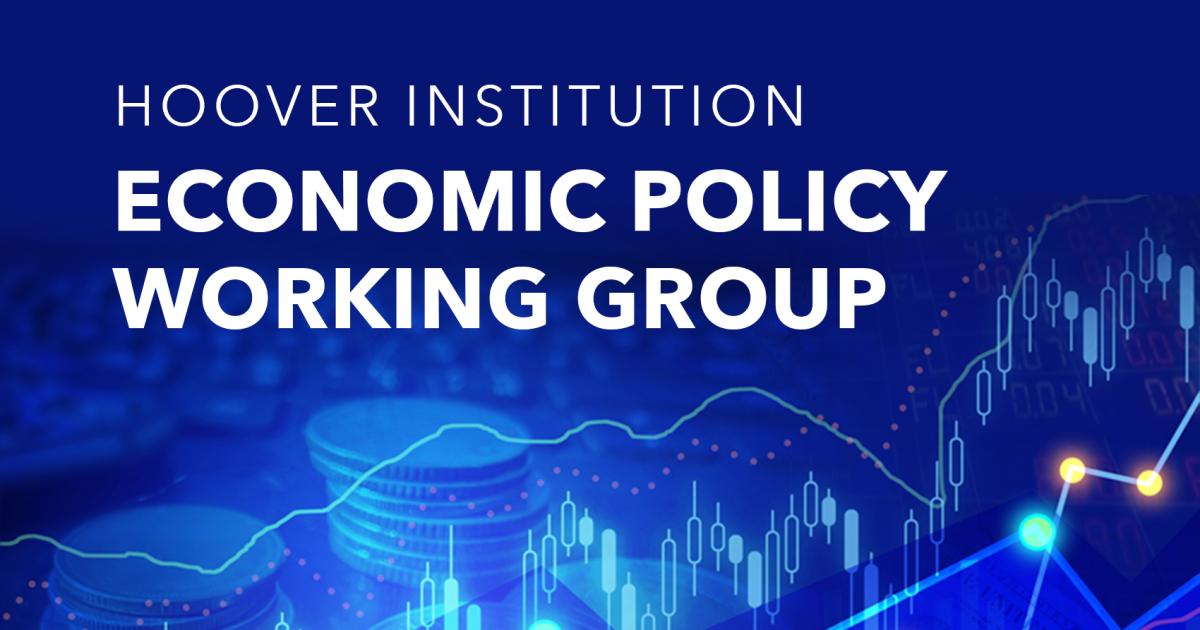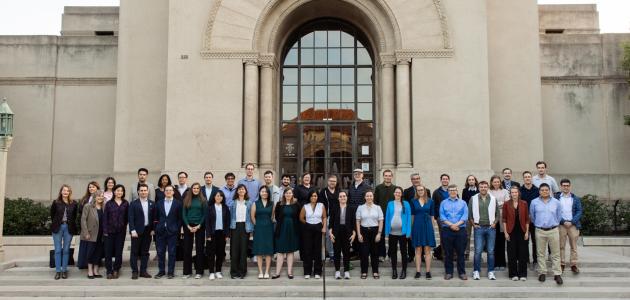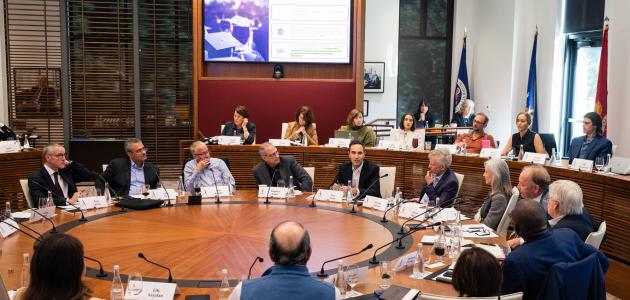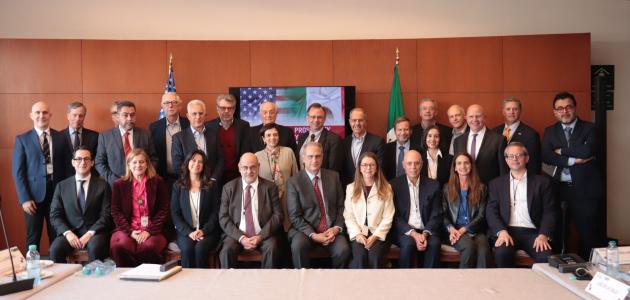Hoover Institution (Stanford, CA) – In December 2007, America was on the shakiest economic ground it had been on since the eve of the Great Depression.
The nation had experienced two consecutive quarters of negative growth. The basis for the looming crisis was that earlier in the year, large portions of Americans who had taken out subprime loans for home purchases or refinances, could no longer afford to make payments on them. As bankruptcies mounted, American financial institutions now had mortgage-backed securities they could not sell. Facing resulting liquidity shortages, the US Federal Reserve began a series of dramatic interest rate cuts.
It was in this volatile economic environment that George P. Shultz Senior Fellow in Economic Policy John Taylor first convened Hoover’s Economic Policy Working Group, on January 31, 2008 —fifteen years ago this week.
As detailed in a concept paper that was revised during that first session, global economic uncertainty had given rise to ideological challenges to the principles of free-market economics. The mission of the working group was to defend and advance these principles, which had been central to record American economic growth in the preceding quarter century. The fate of these proven policy principles moving forward would determine whether that boom would reemerge and continue to improve people’s lives or whether it would stall and stagnate, the document continued.
Under the original title “Working Group on Global Markets and Economic Policy,” this Hoover initiative was guided by the principle of applying rigorous analysis to economic issues with the aim of positively influencing domestic and international public policy. To this end, the working group would host weekly off-the-record meetings, as well as workshops and conferences. It would also encourage members to publish books, working papers, white papers, and op-eds, as well as provide expert testimony to congressional bodies and government agencies and commissions.
The January 31 meeting featured distinguished economists, including Taylor; Secretary George Shultz; Senior Fellows John Cogan, Michael Boskin, and John Shoven; Volker Wieland, Goethe University (Germany) professor of monetary policy and theory; Hoover overseers John Gunn and Charlie Johnson; Shultz’s then research assistant Matt Gunn; and National Fellow John Ciorciari, the working group’s original executive director.
In that first meeting, participants discussed the roots of the financial crisis and what fiscal and monetary policy measures needed to be adopted to put the economy back on track. Participants also set agendas for the working group’s ensuing meetings.
At the next meeting, on February 8, 2008, Taylor hosted participants for a dinner at his home in Palo Alto, where the guest speaker was former secretary of the Treasury John Snow. Dinner attendees engaged, most notably, on the possible impact of the $152 billion stimulus package. The bill, signed into law by President Bush on February 13, provided a $300 rebate to eligible Americans.
Participants also weighed possible regulatory responses to the subprime lending crisis; many agreed that regulatory changes had to be conducted carefully so as not to hamper competition in the marketplace.
The months ahead proved turbulent for America’s financial sector. In March, shares of the iconic Wall Street brokerage firm Bear Stearns collapsed, prompting its purchase by JPMorgan Chase in a fire sale at just $2 per share backed by $30 billion in financing from the Federal Reserve. Later in the year, the US Treasury took control of Freddie Mac and Fannie Mae. A week later Lehman Brothers declared bankruptcy, while the US government bailed out AIG to the tune of $85 billion.
In July 2008, the Working Group hosted its first annual Monetary Policy conference, featuring distinguished economic, financial, and legal experts. The first conference focused on these unprecedented set of actions by the Federal Reserve. It also addressed how this crisis may impact the future of the complex regulatory structure governing US and global financial systems.
Issues and ideas discussed at the annual monetary policy conferences have varied from year to year, but a recurring theme has been the recommendation that the Fed utilize monetary tools at its disposal that have historically helped ensure price stability and long-term growth in the economy.
The Hoover Institution Press has published a series of conference volumes featuring the speeches and papers presented every year. The most recent, How Monetary Policy Got Behind the Curve—and How to Get Back (2023), which Taylor edited with conference cohosts Senior Fellow John Cochrane and Distinguished Visiting Fellow Michael Bordo, addresses how the Fed can dampen inflation after its initial hesitation to raise interest rates.
In October 2008, the Bush administration attempted to restore confidence in markets. Through the Troubled Asset Relief Program (TARP), the government directed $700 billion in taxpayer funds toward the purchase of mortgage-backed securities and other assets from America’s largest financial firms. In November of that year, the Federal Reserve announced that it was going to make expansive asset purchases. This policy, called quantitative easing, radically expanded the Fed’s balance sheets for the purpose of lowering interest rates and injecting liquidity into the economy.
In December, the working group sponsored a seminar that examined several facets of the crisis, in particular whether these policy responses and interventions had been effective and what reforms were needed to prevent the economy from becoming worse.
In February 2009, Taylor released Getting Off Track: How Government Actions and Interventions Caused, Prolonged, and Worsened the Financial Crisis. Published within weeks of Taylor’s submitting his manuscript, thanks to painstaking efforts by the Hoover Institution Press, Getting Off Track argues that there was a classic explanation for the global financial crisis: “a monetary excess that led to a boom and an inevitable bust.”
Taylor maintained that the Fed had kept interest rates below known monetary policy rules (such as the Taylor rule). These excessively low rates, combined with the use of subprime mortgages, led to excessive risk taking by lenders. These loans were, in turn, sold through the secondary market and packed into mortgage-backed securities, of which rating agencies also underestimated risk.
Taylor wrote that government interventions did little to jump-start the economy and sometimes even worsened it. The $152 billion stimulus in February 2008 did not increase consumption. Meanwhile, the Fed’s actions to lower interest rates all the way to 2 percent in April 2008, from 5.25 percent in August 2007, had the impact of depressing the value of the dollar and raising oil prices substantially. Moreover, the government’s decisions to bail out some companies under TARP while allowing others to fail was not based on predictable frameworks of government policy and likely further roiled markets.
In November 2009, the working group produced The Road Ahead for the Fed, based on the monetary policy conference in March of that year. Edited by Taylor and Ciorciari, this volume features chapters by several economists from the Hoover Institution, Stanford University, and elsewhere. The aim of this book was to help readers understand the Fed’s unprecedented series of interventions during the financial crisis. It also proposed regulatory reforms that would allow the Fed to move away from these radical interventions and back toward sound monetary policy making.
Since its inception, the working group has expanded its membership, hosted nearly three hundred seminars and workshops, and produced close to two hundred working papers. These have covered a broad spectrum of topics, including the affordability of comprehensive health care reform, the development of human capital through education, the proposal of a central bank digital currency, globalization, federal entitlement spending, the shift to remote work during the COVID-19 pandemic, and much more.
In 2009, the working group established the Resolution Project, chaired by the late Senior Research Fellow Ken Scott, which explored alternative policies to bailouts to address financial institutions that were in distress. Out of that project came three books, Ending Government Bailouts as We Know Them (2010), which proposed a modification of Chapter 11 to allow large firms to go into bankruptcy while continuing services vital to the economy; Bankruptcy Not Bailout: A Special Chapter 14 (2012), which conceived of a new chapter of the bankruptcy code (Chapter 14) that would provide a clear and predictable way to allocate losses if a financial institution fails; and Making Failure Feasible: How Bankruptcy Reform Can End “Too Big to Fail” (2015), which called for bankruptcy reforms that more easily facilitate the recapitalization of financial institutions.
Over the past fifteen years, the working group has consistently been informed by history in its study and formulation of policy ideas. In early 2020, Taylor and Secretary Shultz published Choose Economic Freedom: Enduring Policy Lessons from the 1970s and 1980s, in which the two reflect on how government decisions in the 1970s led to a period of stagflation and how political leadership in the 1980s helped correct the course of the economy and put it on a path toward long term prosperity. Released just weeks before COVID-19 caused a shutdown of the global economy, the contents of the book proved prescient: as in the 1970s, during the pandemic the Fed kept interest rates extraordinarily low even as inflation was on the rise and energy costs spiked, creating further surges in demand that far outstripped the economy’s capacity to produce goods and services.
At the beginning of the pandemic, Taylor transitioned the working group’s weekly meetings to a virtual platform. Since then, the level of participation from policy makers and scholars across the nation and the world has grown substantially. Even after the working group resumed in-person meetings in 2022, Taylor continued to provide participants with the option to engage with their colleagues remotely.
In the pandemic environment, Taylor departed from the working group’s tradition of holding seminars off-the-record, when he began uploading video recordings of the proceedings for public view. A world-renowned economist, Taylor is also a committed educator. He made this decision in the spirit of the January meeting fifteen years ago: to defend and advance knowledge of free-market principles that were responsible for improving the lives of generations of Americans.







